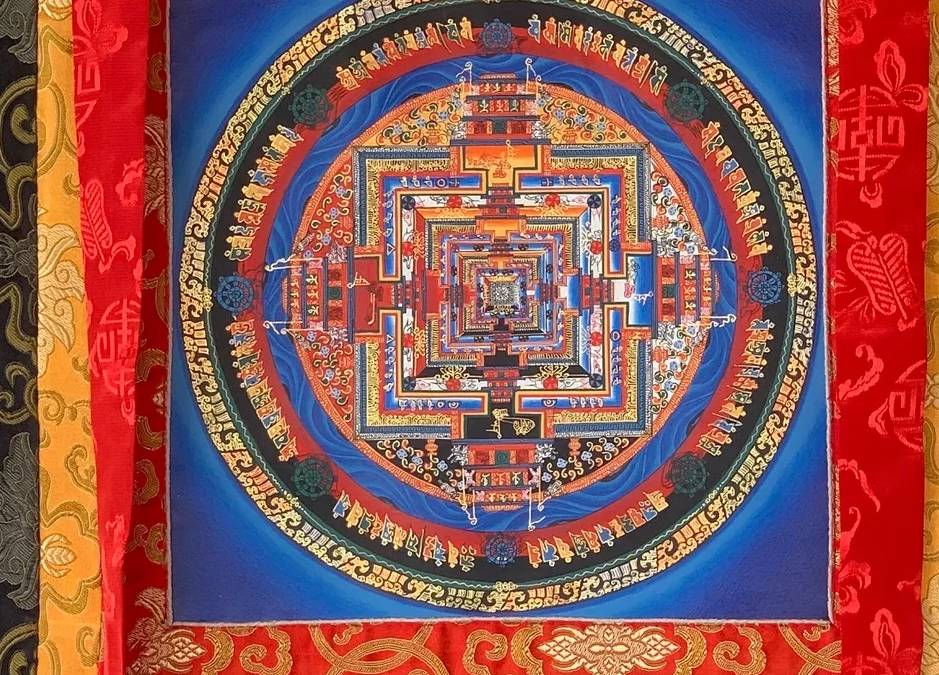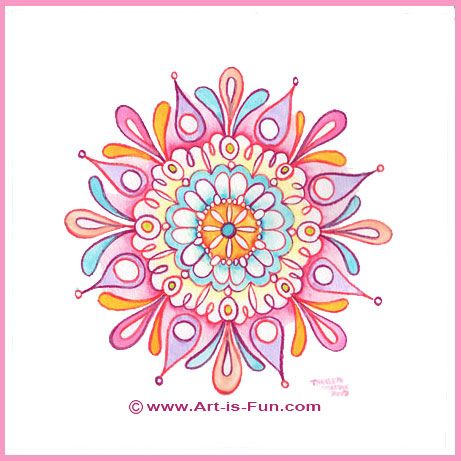For many an original mandala attracts through a blend of order and harmony. A mandala pattern contains a pleasing geometry of circular forms and vertical lines which create a beautiful pattern – perhaps even a route to the inner self.
For others a completed mandala contains multiple levels of mystery – with their radial symmetry, sacred symbols and a complex abstract design – an expression of Asian traditions and profound emotional meanings.
The psychoanalyst Carl Jung was a particular proponent of mandala drawing. His own mandala painting revealed to him a basic structure of creation which tended towards an identifiable center point that revealed the state of flow in the natural world.
The word mandala derives from the word essence and container; for Buddhist monks the mandala art form was an aid to meditation but mandala art designs were also commissioned (in typical Buddhist fashion) as a prayer for the welfare of others. Mandalas also represent the order to the milky way and the vast universe, a circle of life where the center of the mandala is a world mountain, where the aspirant is to find his or her own place and realizes integration.




